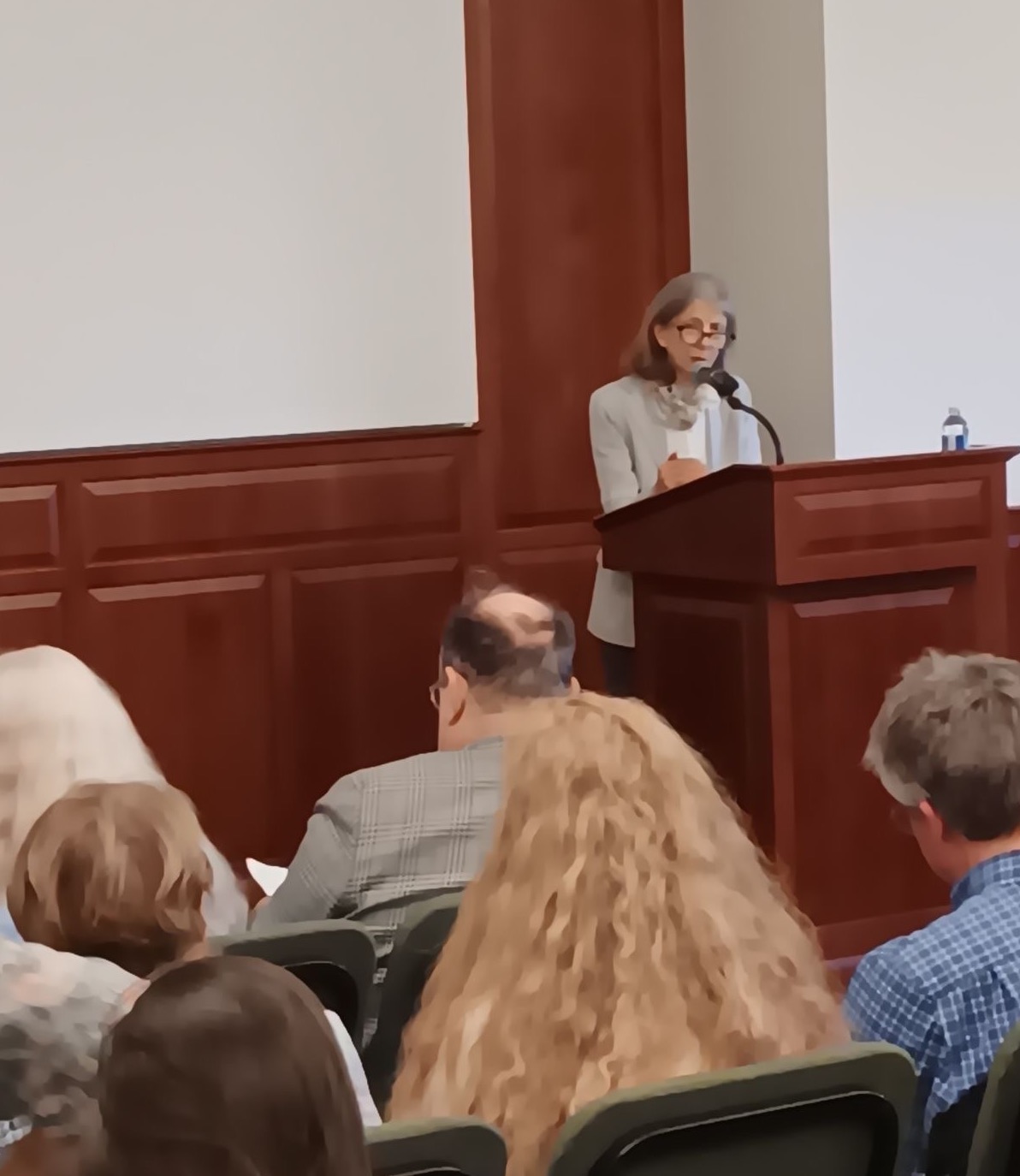
I have just returned from a wonderful conference at Wheaton College on the thought of George MacDonald (photo at left, courtesy of Ben White). I’ve mentioned in earlier posts how close MacDonald’s thinking is in many respects to Kierkegaard’s. Despite this, however, his thought seems virtually unknown to Kierkegaard scholars, so I was pleasantly surprised to see that mine was not the only paper on MacDonald and Kierkegaard, Mark Lama presented a paper entitled “Hearing the Raven Croak: Lilith, Kierkegaard, & Selfhood.” I enjoyed the paper very much, though I’d have enjoyed it more, I’m sure, if I had read MacDonald’s novel, Lilith.
Lama’s paper led me to the discovery of yet another problem with the Hongs’ translation of The Sickness Unto Death. Lama quoted from Hannay’s translation of that work for Penguin. Hannay has:
This then is the formula which describes the state of the self when despair is completely eradicated: in relating to itself and in wanting to be itself, the self is grounded transparently in the power that established it. (p. 48).
Where the Hongs have:
The formula that describes the state of the self when despair is completely rooted out is this: in relating to itself to itself and in willing to be itself, the self rests transparently in the power that established it. (p. 14).
The Danish, however, is:
Dette er nemlig Formelen, som beskriver Selvets Tilstand, naar Fortvivlelsen ganske er udryddet: i at forholde sig til sig selv, og i at ville være sig selv grunder Selvet gjennemsigtigt i den Magt, som satte det (SKS 11, 130).
I actually preferred the Hong’s “rests” from a stylistic point of view. Unfortunately, I have to confess that Hannay’s “grounded” is better, given that the Danish in question is “grunder” and not “hviler.” My guess is that Kierkegaard chose the former because it fit better the somewhat scholarly tone of the book.
I shouldn’t be surprised that Hannay’s translation is, in this instance, superior to the Hongs’ Hannay’s translations (with the exception of his translation of the Postscript) are generally superior to the Hongs’
I was discussing this recently with Andrew Davison, until recently Professor of Theology and Natural Sciences, at the University of Cambridge (and sometime priest at S. Clement’s here in Philadelphia) and now Canon and Regius Professor of Divinity at Christ Church, Oxford. Davison suggested that I should do a blog post where I identified which of the many English translations of Kierkegaard I thought were the best. I do sometimes get emails from people who want me to recommend translations for them, so it seems like a blog post that does that would be a good idea. Take these recommendations with a grain of salt, though, because I have not sat down and made studious comparisons of all the English translations of Kierkegaard. And remember, no translation can serve as a foundation for serious scholarship.
In general, I would say that the best translations of Kierkegaard are the older ones done by David Swenson and Walter Lowrie. They are still widely available in used bookstores and on abebooks.com. Alastair Hannay’s translations for Penguin are also very good. Under no circumstances, however, should you the translation of the Postcript that Hannay did for Princeton. Something went horribly wrong with that translation as I detailed in earlier posts on this blog. There are assorted other translations, George Pattison has a couple, I believe, as does Bruce Kirmmse. But while Kirmmse has an excellent knowledge of Danish, neither Pattison nor Kirmmse is a writer of sufficient eloquence, I believe, to do Kierkegaard’s prose justice.
I have a handful of translations by other people that I have not yet read. Among those are Stephen Crites’ translation Crisis in the Life of an Actress, and other essays on drama (Harper Torchbook, 1967), A.S. Aldworth and W.S. Ferrie’s translation Consider the Lilies (London: C.W. Daniel Company, Ltd, 1940), Alexander Dru’s The Journals of Kierkegaard (Harper Torchbook, 1958), and The Present Age and Of the Difference Between a Genius and an Apostle (Harper Torchbook, 1962), and an intriguing The Diary of Søren Kierkegaard, translated by Gerda M.Andersen, and edited by Peter P. Rohde.
I will check out these translations and let you know what I think of them in later posts.
Leave a comment